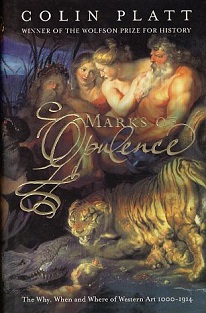
Marks of Opulence - The Why, When and Where of Western Art 1000-1914
Marks of Opulence is a magisterial survey of European art and artistic patronage from 1000 until the triumph of modernism. Tracing art history from the discovery of silver in the Harz mountains, through the catastrophic effects of plague in the fourteenth century, to the studied magnificence of papal and royal courts in the sixteenth and seventeenth centuries, Colin Platt shows how the great and the good have always used art to bolster political power and self-esteem. Arguing that the acquisitive instinct - felt by many of us in different ways - is central to the history of Western art, Platt traces how collecting began in the seventeenth century to spread from the palaces of the aristocracy into the homes of merchants, bankers and industrialists. From the mid-nineteenth century onwards, and in the pre-war Belle Époque in particular, it was the immensely wealthy 'robber barons' and their widows - in London and Paris, in Berlin and Vienna, in Moscow and Barcelona, in Philadelphia and New York - who collected the work of the most innovative artists and broke the hold of the Academies on Western art. Professor Platt 's ambitious sweep through a thousand years of artistic endeavour in the West argues throughout for the transforming power of great riches in the arts, where a superfluity of money has been the spur. ...
